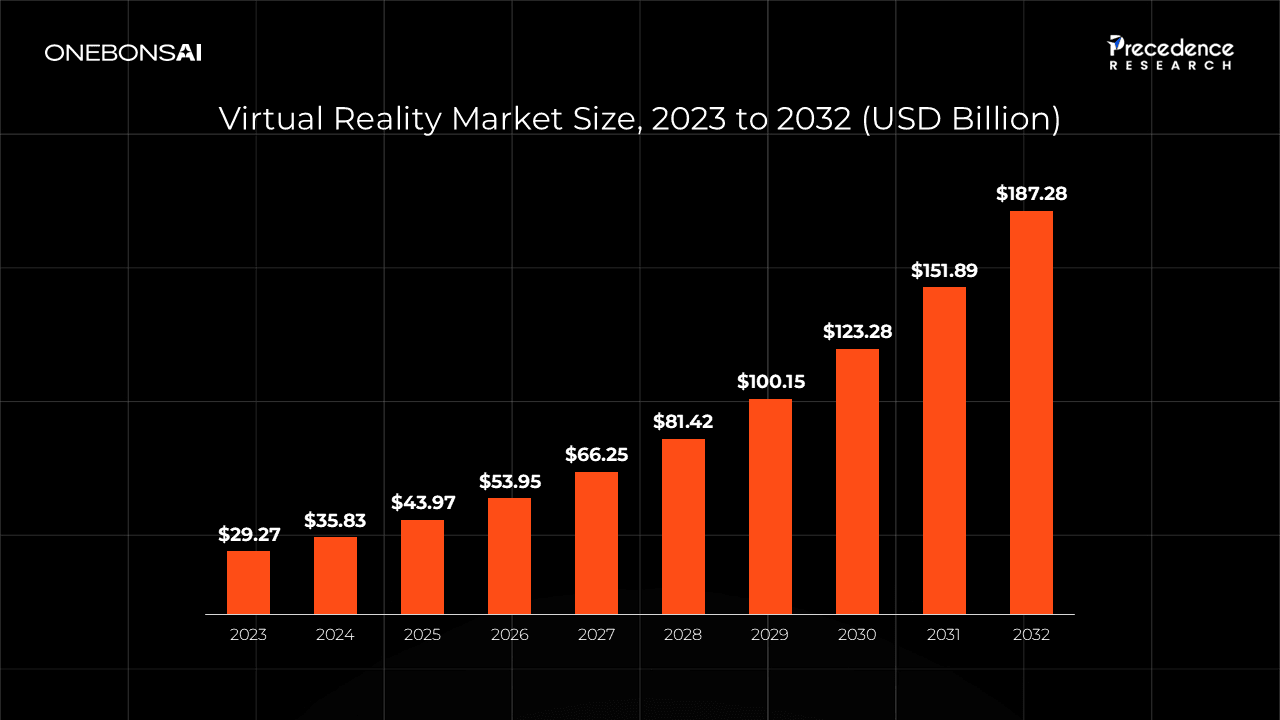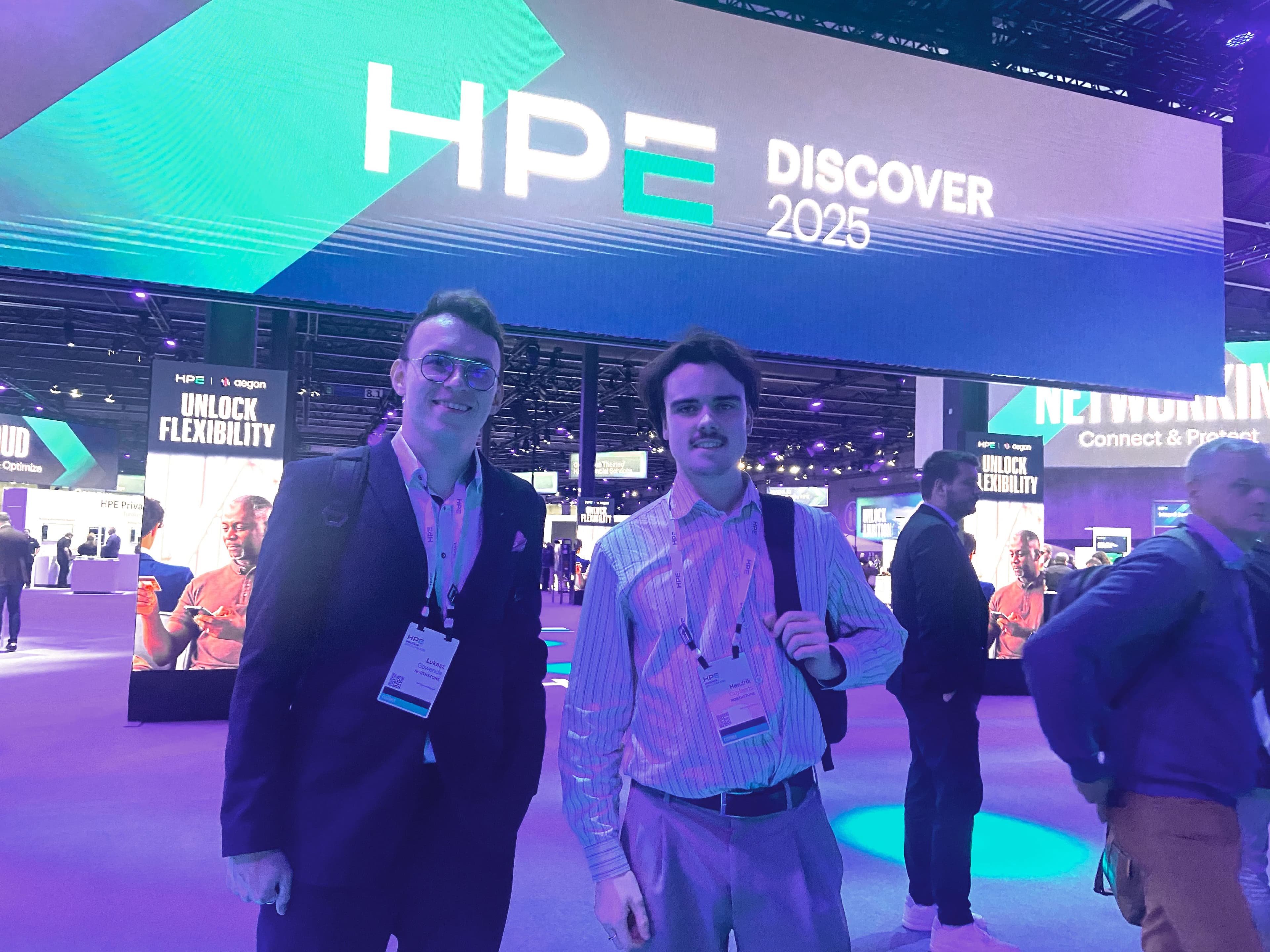VR Business In the Present Day

Since virtual reality first started attracting mainstream attention in the 1990s, this technology has been portrayed as a leap into the future. And there’s a good reason why, high-quality VR is still more immersive than any other technological experience. Taking that into account, it’s not hard to understand how VR has been “the future of technology” for three decades and counting.
But thinking about VR exclusively in futuristic terms detracts from the ways that businesses use this hardware for training, meetings, and other practical applications in the here and now. Read on for a look at how virtual reality has already transformed the workplace and information on today’s most effective VR business applications.

Know These VR Business Stats
Are you unfamiliar with current VR use cases in the corporate world? If so, it might be hard to believe this technology has been widely adopted by businesses. Still, the numbers don’t lie, enterprise VR usage has exploded recently, and this trend shows no signs of slowing down. Just consider these eye-opening virtual reality statistics:
- Virtual Reality market size is going to reach $187B by 2032.
- As of 2023, there are expected to be 70.8 million people using VR in the United States. That’s roughly equivalent to 21 percent of the population.
- Half of all companies have either added VR to their workflow or are actively working towards implementing VR.
- In the half-decade leading up to the COVID-19 pandemic, US job postings requiring skills related to VR grew by 65 percent.
- One out of five people in America is interested in attending a VR meeting.
- A third of all US adults believe VR will positively affect society as a whole.
Here’s How Businesses Use Virtual Reality
By now, you should know just how widespread VR business usage has become. Still, it’s a good idea to understand how companies actually use this tech. Some of the most common VR use cases in enterprise settings include:
Engaging Virtual Meetings
If you were actively employed back in 2020, there’s a good chance you’ve participated in a virtual meeting or two. While video-based meetings were a necessity at the height of the pandemic, there was a reason why many workers wanted to get back to the office as soon as possible. Put simply, a webcam and laptop screen can’t replicate the feeling of meeting with your team in person.
Fortunately, virtual reality can at least partially capture this sensation, making it the best option for your online meetings. When you talk to other people in a 3D environment, you’ll be able to interact naturally and pick up on nonverbal cues that would go unnoticed in a Zoom meeting. And since cutting-edge VR headset options now incorporate eye-tracking features, you can finally look your coworkers in the eye during virtual meetings.
Enhanced Employee Training
If any use case for virtual reality technology has taken off in the enterprise world, it’s VR training. This form of employee training allows trainees to experience hazardous scenarios while facing zero risk in real life, making it a natural fit for people getting ready to do high-stakes jobs. That’s why hospitals, NASA, major airlines, and the U.S. Army all use VR in their training programs.
Of course, the benefits of VR training programs aren’t limited to highly dangerous or technical careers. Today, even KFC has added a virtual reality experience to its existing training regimen. But whether you’re training astronauts or fast-food employees, VR training is more immersive (and, thus, more effective) than any other method on the market.
Novel Recruitment Opportunities
Are you trying to convince the best of the best to work for your company? If so, you’ll want to show them what they can expect from your office. Traditionally, this has involved video tours, photos, and even verbal descriptions, but now there’s a better way.
By creating a 3D model of your headquarters, you can take potential new employees on a VR business tour no matter where they are in real life. Along with the many other benefits of virtual tours, you’ll stand out from the crowd by providing job seekers with a memorable, immersive experience.
New Frontiers in Product Development
Prototyping is a crucial step in product development, but “standard” prototyping procedures aren’t as efficient as you might assume. Since this process focuses on creating physical objects, it can be time-consuming and result in a great deal of waste along the way.
In contrast, using virtual models for your prototypes allows for on-the-spot editing and zero waste. Better yet, viewing and manipulating these models with VR software and a VR headset will give them a sense of presence that’s almost indistinguishable from the real thing. While virtual prototyping is especially commonplace in the auto industry, it can make life easier for any company involved with developing tangible products.

TracheoCare Training

Driving Under the Influence

Crane Simulator - MSC

Scalable Hazard Training for Colruyt

Tactical Combat Casualty Care

Mooring - Environment

Zero Ladder Training - Environment

TracheoCare Training

Driving Under the Influence

Crane Simulator - MSC

Scalable Hazard Training for Colruyt

Tactical Combat Casualty Care

Mooring - Environment

Zero Ladder Training - Environment

TracheoCare Training

Driving Under the Influence

Crane Simulator - MSC

Scalable Hazard Training for Colruyt

Tactical Combat Casualty Care

Mooring - Environment

Zero Ladder Training - Environment
Work with OneBonsai to Change Your Workplace
Virtual reality has a significant role to play in the future of business, but that doesn’t mean you should wait until then to start building an enterprise VR strategy. With the right VR software and hardware, you won’t need to wait any longer to benefit from immersive virtual meetings, high-quality training programs, and much more.
Is your enterprise ready to benefit from one or more of the VR applications listed above? If it is, you’ll need to join forces with a VR business partner to find optimal solutions for VR training and more. OneBonsai can help. Reach out to our team today!

DIMITRI PIRNAY
April 25, 2023









